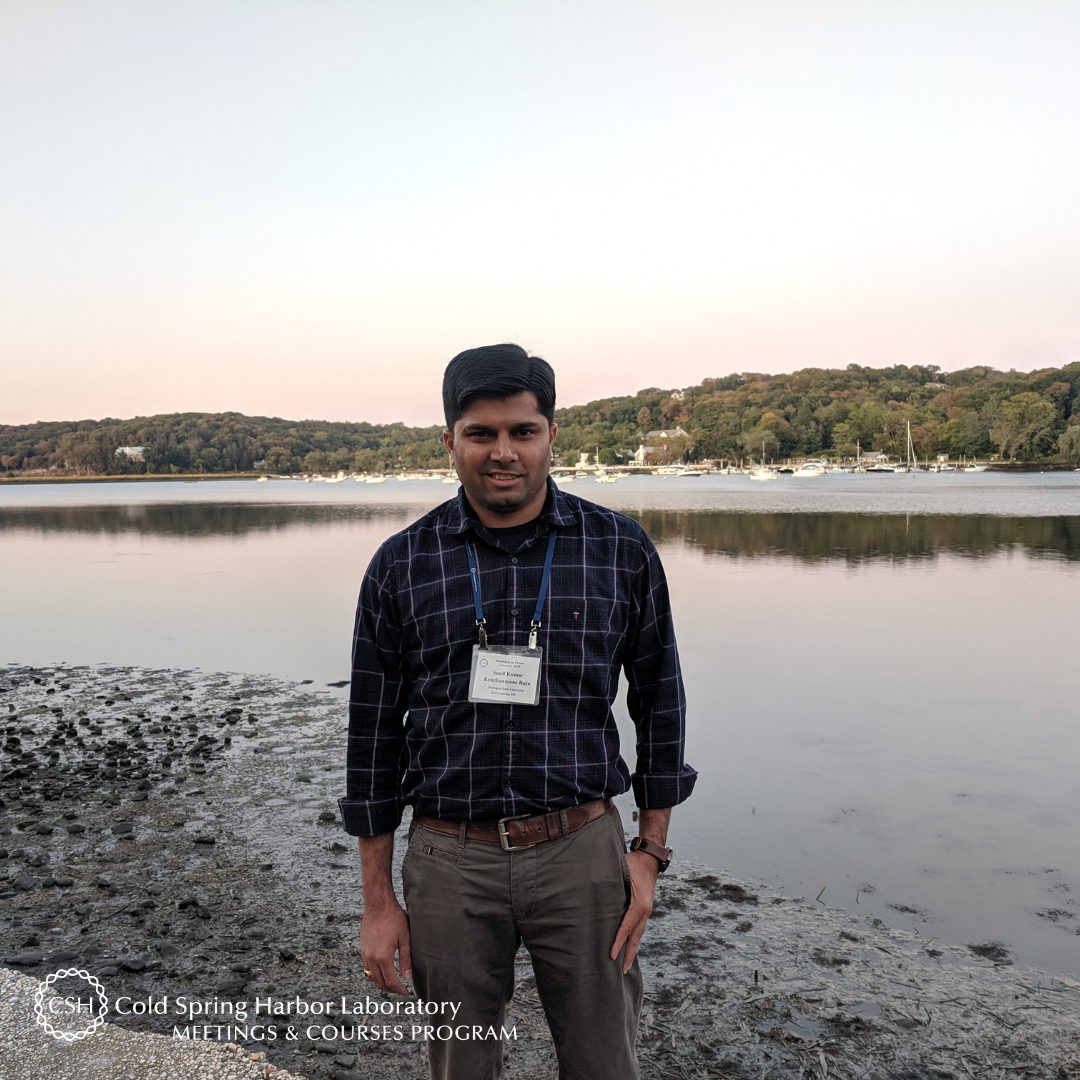Meet Xavier Le Guezennec of the Institute of Molecular and Cell Biology in Singapore, where he holds a dual role in the Regulation of Membrane Traffic Laboratory as a senior research fellow and core manager of the Institute’s siRNA screening facility. The French national just finished training at Antibody Engineering, Phage Display & Immune Repertoire Analysis, which also happens to be his first course at CSHL.
What are your research interests? What are you working on?
Our lab has observed fundamental mislocalisation of enzymes involved in early O-glycosylation pathway which leads to specific changes in cell surface proteins. We work currently on multiple strategies to target these cell surface proteins in liver cancer.
In addition, we study many fundamental cell membrane traffic regulators using siRNA genome wide screens with high content imaging.
How did you decide to make this the focus of your research?
As compared to proteomics or genomics, glycosylation is a field well underappreciated. There is good opportunity in this field to discover new findings but the set of tools available to study glycosylation are still highly limiting.
How did your scientific journey begin?
Initially French-educated, I moved to the Netherlands for a PhD in transcriptional regulation then to Singapore where I expanded my skillset learning mouse in vivo techniques. A second postdoc gave me the chance to learn some basis in making microfluidic chips which led to a position in Singapore Biotech for a couple of years With this biotech company we developed applications and tested them in the field to various biopharma customers worldwide. It was fun but then became too commercial for my taste so I decided to return to academia and apply my acquired and valuable pharma high content screening skillset to the IMCB core facility.
Was there something specific about the Antibody Engineering, Phage Display & Immune Repertoire Analysis course that drew you to apply?
Our lab has a fundamental need for antibodies used in mouse liver cancer studies. Antibody phage display allows one to obtain human antibodies in a fast manner which is very valuable for our goals. The course program covers all practical basis from real experts and also some aspect in converting antibody design to CAR-T, which is very exciting.
What and/or how will you apply what you’ve learned from the course to your work?
At the lab, we already started to screen human antibody libraries but I surely feel more confident to screen more targets after attending this course. Building an immune antibody library is complex and the course surely gives all the tips and tools for us to build antibody libraries back home with confidence. This could certainly expand the capabilities in our institute beyond monoclonal antibody generation with hybridomas.
What is your key takeaway from the Course?
Phage displays allows one to fish for a needle in a haystack in a very fast manner. Harvesting antibody repertoire from any species is accomplished with basic molecular biology tools/skillset.
If someone curious in attending this course asked you for feedback or advice on it, what would you tell him/her?
Hurry up, go for it.
What do you like most about your time at CSHL?
The wonderful natural settings of CSHL provide high serenity almost to a point where I could compare it to a scientific monastery.
Thank you to Xavier for being this week's featured visitor. To meet other featured scientists - and discover the wide range of science that takes part in a CSHL meeting or course - go here.






